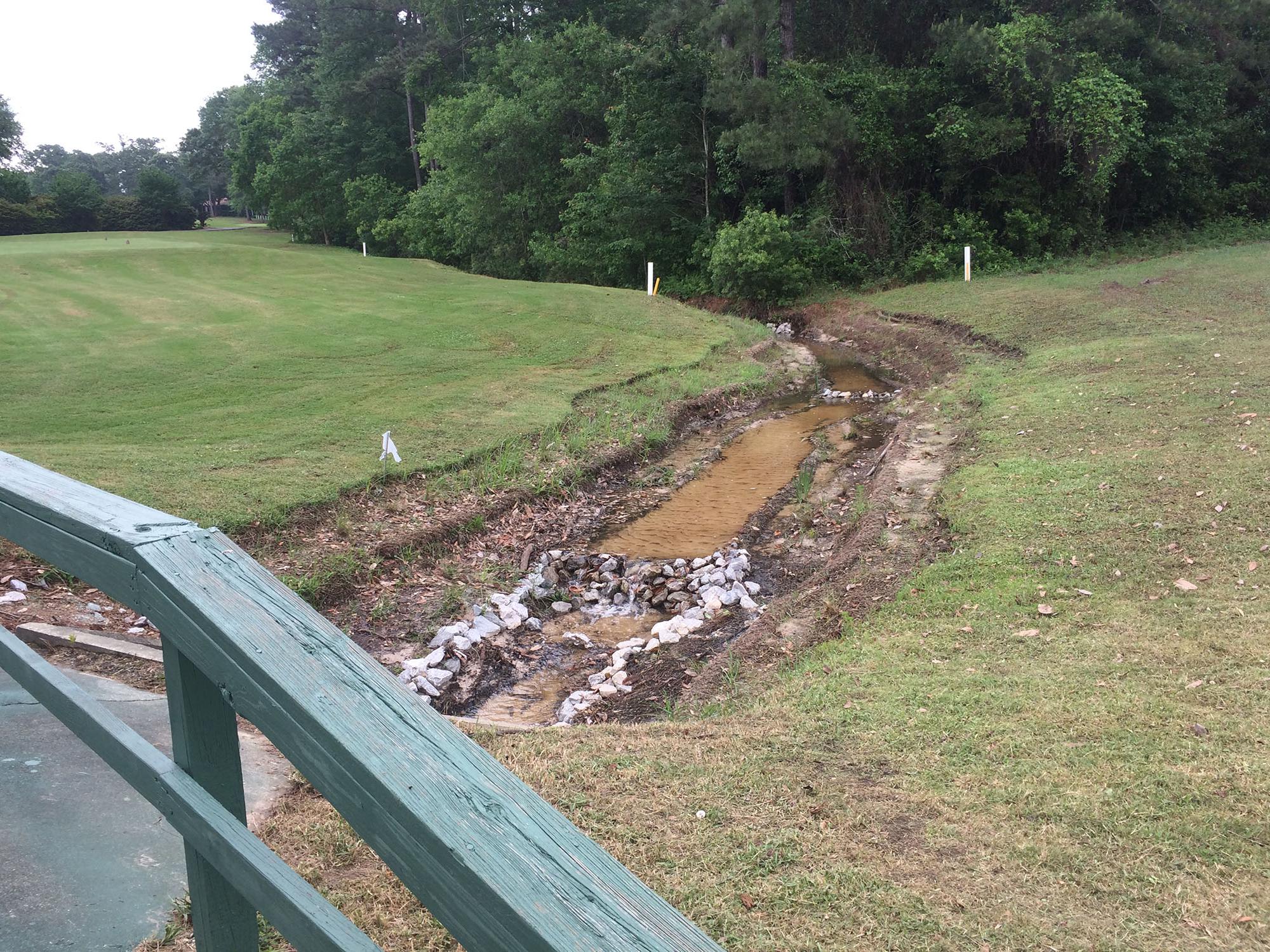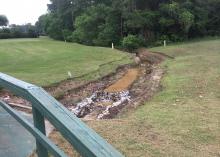Information Possibly Outdated
The information presented on this page was originally released on January 13, 2017. It may not be outdated, but please search our site for more current information. If you plan to quote or reference this information in a publication, please check with the Extension specialist or author before proceeding.
Heavy rains carry more than water
STARKVILLE, Miss. -- Heavy winter and spring precipitation can result in water runoff from roads, homes, lawns and parking lots, washing more than water downstream.
Today, polluted runoff is the source of most of the contamination in the nation’s waterways. Rainfall drops water onto roof tops, plants and the ground. Some water is taken up by plants or moves through the soil, but much of it runs across land. Surface water flows from higher elevations to lower elevations, running from lawns and roads to roadside ditches and storm drains to creeks and streams. It eventually flows into rivers that empty into the oceans.
Throughout the water cycle, there are many points where water can pick up small sediments from surfaces where natural plant cover has been removed, like construction sites or agricultural land. The flowing water can also transport chemicals such as fertilizers, pesticides, oil and antifreeze. Even naturally occurring biological contaminants -- including bacteria and viruses from pet or human waste -- can float downstream. Each situation results in nonpoint source pollution, which is any source of pollution that is not from a direct source, such as pipes from industrial or wastewater plants.
Nonpoint source pollution is often associated with overland surface water flow. It is much harder to identify sources of this pollution. One recognizable form of this pollution can occur in parking lots after heavy rains. You may see a rainbow-colored sheen caused by oil-based chemicals that drip from vehicles into standing puddles.
As we move into 2017, water resource protection remains a top priority. Local, national and global problems related to water resources are likely to increase. Wherever land is used for human activities, there is an increased chance for runoff of pollutants, whether intentional or not. Landowner awareness is important in reducing unintentional pollution. We all need to take the initiative to reduce nonpoint source pollution to protect environments and waterways locally and even thousands of miles away, as water processes occur on a global scale.
There are easy ways we, as a community, can help reduce water pollution by making small changes. You can prevent polluted runoff at home by using a broom instead of a hose to clean your driveway, so that you aren’t just spraying oil, dirt and other contaminants down storm drains. Carefully store and dispose of household cleaners, chemicals and oil. Alternatively, you can recycle oil at automotive parts stores. Use fertilizers and chemicals sparingly. Always use pesticides according to instructions on the label. Be sure to maintain personal septic systems and pick up pet waste.
For more information about water resource protection, contact Beth Baker with the Research and Education to Advance Conservation and Habitat (REACH) program at MSU at 662-325-7491 or [email protected].

Editor’s Note: Extension Outdoors is a column authored by several different experts in the Mississippi State University Extension Service.





